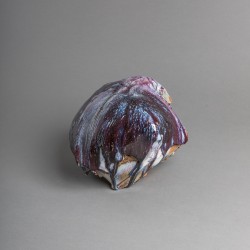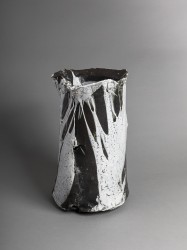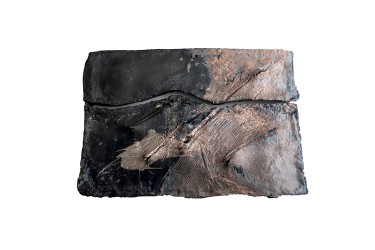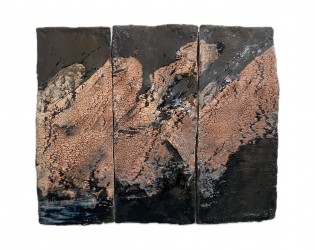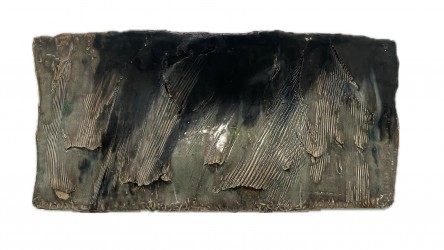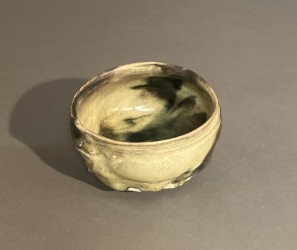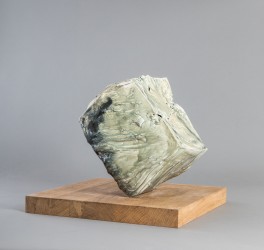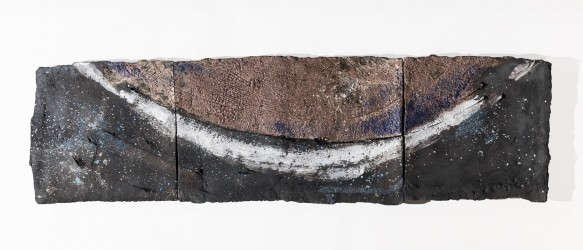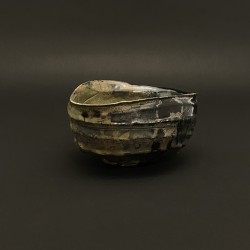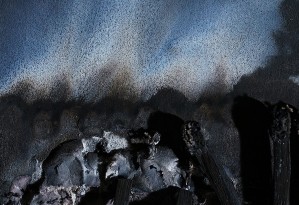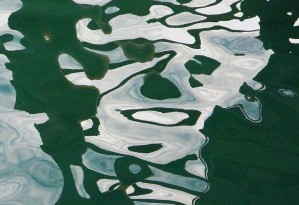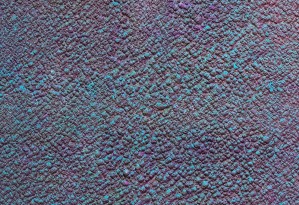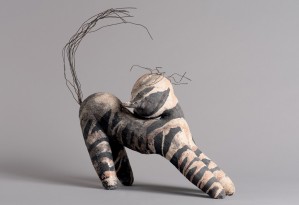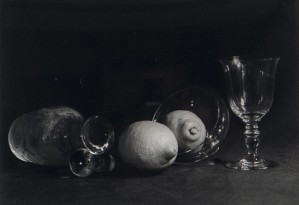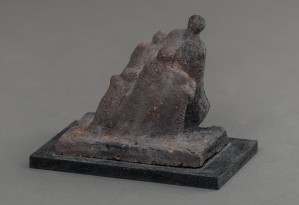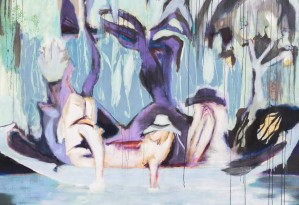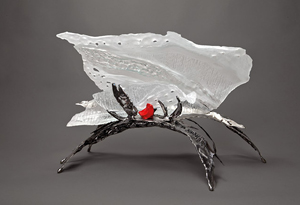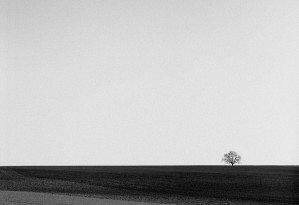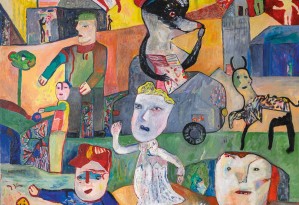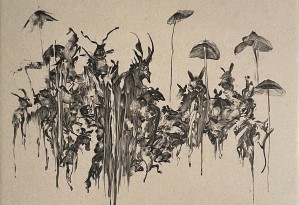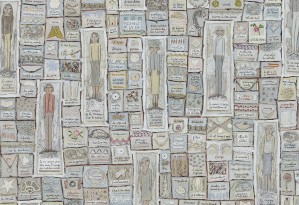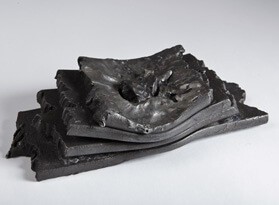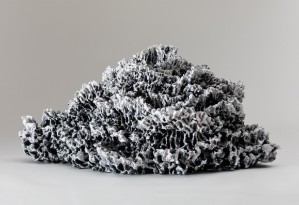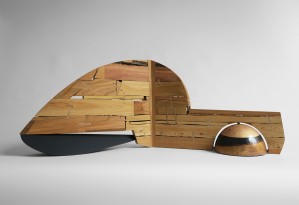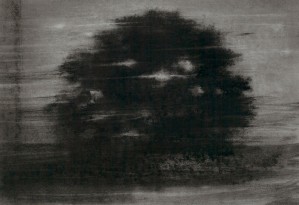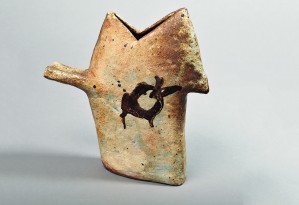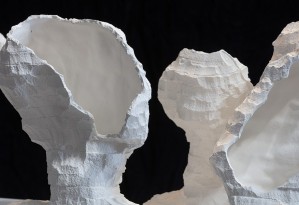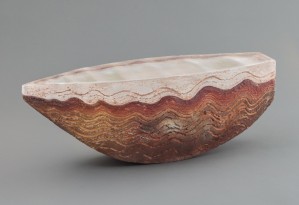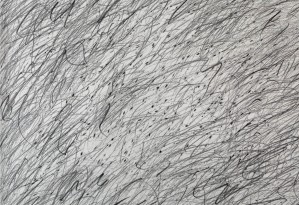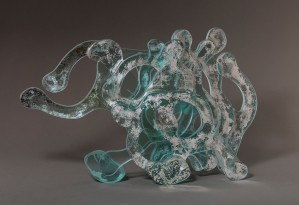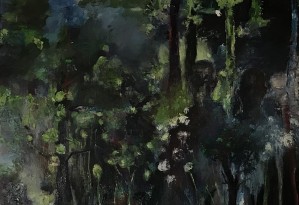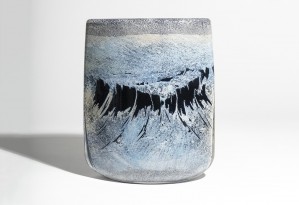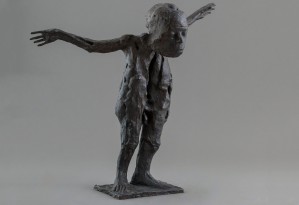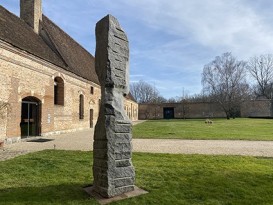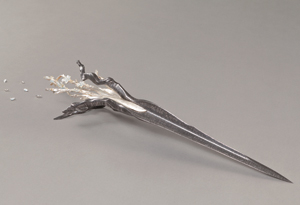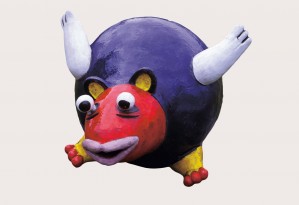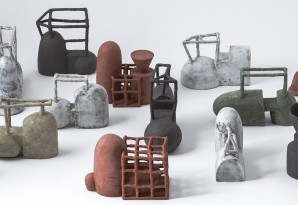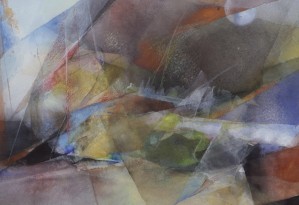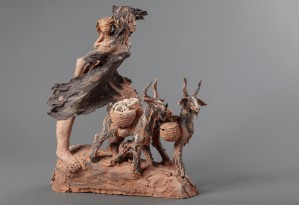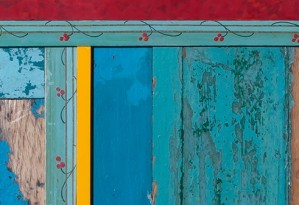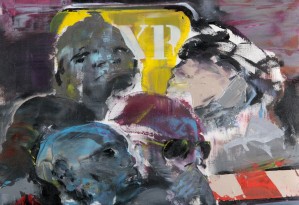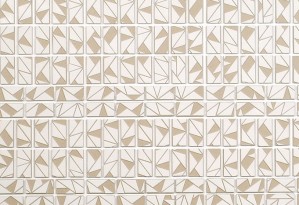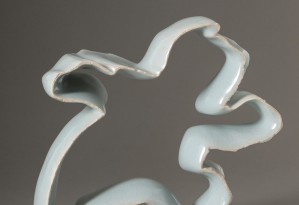CHAMPY Claude, ceramic sculpture, Permanent artist of Galerie Capazza since 1977
“Who said drawing is the writing of shape?
The truth is art must be the writing of life”.
Edouard Manet
Biography
Claude Champy was born on 12 September 1944. He has arrived in Plaisir, France, where his family has lived for several generations, ever since. He likes to recount that his grandfather was mayor of this town, which was rural during his youth and since has become an outer suburb of Paris.
In 8 artistes & la terre Champy describes how, as an adolescent he happened upon a series of books by Henri Perruchot on the lives of Van Gogh, Gauguin and Cézanne, which instilled in him an unshakeable determination to become a painter. Later in life, thanks to the Far East, he became aware that ceramics were also an art form and began to see clay as a forum for expression worthy of painting (see Christine Shimizu p. 158). In 1963, when Claude Champy did not receive the baccalauréat, his parents let him embrace the artistic career he was dreaming of.
After one year of preparation at the Penninghen and Dandon workshop, Champy trained at the Ecole des Métiers d’Art (founded in 1941 at Hôtel Salé, rue de Thorigny-current Musée Picasso) in Paris from 1964 to 1968. This school is now the Ecole des arts appliqués et des métiers d’art, Rue Olivier de Serres. At the time, it had several workshops and a hierarchical program that started with design, plaster, moulds, casting, etc. Under the management of Roger Waechter. The last year, more specifically focused on enamel, took place under the leadership of ceramist Pierre Fouquet who was in control of the “kiln room”, a sort of sanctum where “you had the impression something was happening”. Champy took advantage of these infrastructures to try his hand at glazework hundreds of times.
During this period, all young ceramists yearned to travel to La Borne: Claude Champy made the trip in 1965. He uses several tones of voice to describe this adventure but always with the solemn an joyful warmth that people generally reserve for life-changing moments. The encounters that he had there with Yves Mohy, Jean Linard, Anne Kjaersgaard, Elisabeth Joulia, Rémi Bonhert, Hildegund Schlichenmaier, Vassil Ivanoff, and Jean and Jacqueline Lerat made a strong impression. But it was especially the vision of Mestre’s wood-fired kiln at 1300° that triggered his inspiration. What attracted him more than anything was a “rich and honest lifestyle”. “It made a permanent impression on me. I wanted to relive it for myself “A first 350-litre wood-fired kiln built with fire bricks scrapped by the Régie Renault, was thus brought onto the family property in Plaisir in 1967
During their last year of training at the Ecole des Métiers d’Art, the students had to choose a piece from the Musée national de céramique de Sèvres and make a terra cotta replica. Claude Champy chose a plate Iznik (Turkey, 16th century, MNC 15478), which he still immediately recognizes in 2009. This choice was not fortuitous. For Champy, Iznik remains one of the best ceramic art. This detail may seem insignificant, but only on the surface. One could imagine Champy praising stoneware from Saint-Amand or antoher centre of ceramics from the Far East. His initial taste in Iznik demonstrates the importance he grants to the brush’s finesse, the decoration’s beauty, the enamel’s quality, balanced colours, plays on white and colours and in one word, “simplicity: it is magnificent and unpretentious. It is joyful”.
Besides basic professional skills, the Ecole des Métiers d’art gave him the chance to work alongside ceramists of his generation such as Bernard Dejonghe, Jacques Buchholtz, Agathe Larpent, etc. With whom he exchanged knowledge, and who actively participated in his first firing experiences, as well as Daniel Pontoreau, Pierre Baey, Niole Giroud, etc. All of the afore mentioned artists remain references for him: “ Friendship with other ceramists counts tremendously for him”.
With the Art diploma in his hands in 1968 -Claude Champy beaks a smile when he speaks of this diploma- and his military service completed, the young ceramist spent two years as workshop foreman in an industrial pottery works in Clichy from 1971 to 1972. At the same time, Champy started working independently and in 1971 he built a second 1.5 m3 wood-fired kiln in Plaisir. It was demolished circa 2004.
Being able to spin bowls and vases was not enough. He also needed to know how to advertise and sell them… Starting in January 1973, Claude Champy took part in the Ateliers d’Art trade fair, Porte de Versailles in Paris, twice a year, in September and He already had a degree of self-confidence and confidence in his work: “He spoke of his firing, his forms, and his research. He had a very easy-going, natural side […] that generated confidence. He didn’t talk theory […] It was more his life at the studio”. These trade fairs allowed him to meet several individuals including some of his main collectors: Charles-Adrien Buéno circa 1975, Françoise and Arnauld de l’Epine circa 1976, etc.
Jeanine Sauvaire, who ran a shop at 5 Rue Le Goff in Paris, bought and sold his first ceramic pieces in 1973. Claude Champy is stil very grateful to her. It was the beginning of a long friendship, marked fourteen years later by the photos taken by Raymond Sauvaire of the Champy workshop for Lucien Curzi’s book.
He participated in a first group exhibition in 1974, De la céramique à la sculpture in Bagnolet , ten in 1975, in the ground-breaking exhibition 18 artistes et la terre at the Noëlla Gest Gallery in Saint-Rémy-de-Provence. This exhibition also featured some of his renowned forbearers such as Philippe Lambercy, René Ben-Lisa, Jean and Jacqueline Lerat, etc. and brought Champy to the forefront of the French ceramic art scene at the age of 31.
His new status of young promising ceramist was confirmed the following year when he received an honorary diploma from the Biennale Internationale de Céramique in Vallauris and when he was featured in a monographic exhibition at the D. M. Sarver Gallery, the first of its kind organized by this gallery, which for thirty years was the main forum for ceramic art in Paris. At the time, Daniel Sarver was a regular ceramist at the Ateliers d’Art trade fair, Porte de Versailles. he produced glazed stoneware in collaboration with Roger Boureau before gradually abandoning this activity: “he saw himself trapped in this production. Champy ran away and he was right: he played a much more important role […]. One day he found his true calling […] He is a real talent, a genius with an amazing way of looking at others. He found his way. During this period, Daniel Sarver’s gallery was located at 20 Rue Saint-Paul: “it was his studio and he started of talking to just anybody. Claude Champy had a language and knowledge that attracted other people. He had sound taste, he was stimulating. Daniel Sarver was therefore extremely important to Claude Champy, to whom he devoted more exhibitions than to any other artist. His confidence, vision, sales persuasion and loyalty were precious to him, like to many of his peers. “He undeniably set high standards for them. Sarver had influence over them. He had a wonderful eye. […] Sarver knew how to see objects in their surrounding conditions abd choose the best. […] Much of that generation’s talent was discovered by Sarver. […] He played a very imposing role. He was an excellent gallery owner. In 1988, the D. M. Sarver gallery moved from Rue Saint-Paul to 99 Rue Quincampoix, then to the corner of Rue du Bac and Rue de l’Université; in 1996, it moved to 6 Rue du Trésor and has been located at 106 Rue Vieille-du-Temple since 2002. From the 1970’s, the sale of his pieces was always a priority for Claude Champy: “I always tried to sell what was sellable” and according to his peers, from that time on, “it worked well for him”. The sarver gallery was one of the main keys to this success.
For Champy, 1976 was also the year of a 15-day trip to Quebec organized by Alain Girel with Jacques Laroussinie, Agathe Larpent, and Michèle and Jean-Louis Raymond. The group met Jordi Bonet, visited various workshops and upon their return, organized an exhibition on funeral art, Rue du bac in Paris, before meeting Canadian exhibitors the following year at the international symposium in La Borne. Claude Champy’s international stature was confirmed through regular exhibitions in several galleries in germany from 1979 (Vehring, Hennig, Schneider galleries, etc.) and through exhibitions in Netherlands (Loes and Reiner gallery) Italy and Denmark.
In the mid 1970’s Claude Champy launched a collaboration with the Capazza gallery, in Nançay, comparable to the one established with D. M. Sarver in Paris. The goal of Gérard and Sophie capazza at the time was to present ceramics, paintings, sculptures and photographs in the same gallery by establishing a network of collectors likely to simultaneously take interest in this various media. They in turn played an important role in Champy’s career thanks to their support, loyalty. This gallery organizes thematic and monographic exhibitions and relies on an intense relationship of complicity with its artists. Thanks to the gallery owners he worked with, Champy’s core base of loyal collectors grew and some became real connoisseurs and valuable contacts: “There are people who see the future of my work, who know the wares I’m going to make in five years. Not me”. But Champy also wanted to nurture his artistic freedom: “I went throught a long period where I had no contact with collectors- I would have felt like I was working for them”. He was always grateful to gallery owners for the freedom they gave him and he adopted a loyal attitude in return: “He has genuine and intelligent relationships with his main gallery owners. Champy saves his masterpiece for them. He generally tries to organize one or two exhibitions [per year] in which he shows off his main pieces. It is an opportunity to show how his work has evolved over time”.
Circa 1980, Claude Champy built a third 2,5 m3 kiln which is still operational in spite of several hundred firings and repairs. The 1980’s were marked by institutional recognition with his participation in the French ceramics exhibition at the Paris Musée des arts décoratifs, organized for the general assembly of the International Academy of Ceramics (IAC) in 1981, and then with his presence in the “De la terre et du feu: 5 potiers contemporains” exhibition at the Musée national de céramique de Sèvres in 1983. The simplicity of his pieces, which grave “pink with white, blue with black and glitter with salt”, made a splashing impression. The central display case that feature done object by each of the five artists made Champy the exhibition’s figurehead with al large monumental place that particularly drew attention: “Its style was undeniably mature”. At the same time, he continued participating in multiple group exhibitions at the Le Labyrinthe gallery in Uzès, in la Maison de la céramique in Mulhouse, at the Forney Library in Paris, etc. Where he was often a central figure: “Claude is a man with ideas, he embraces clay. He had power; there was something about him […]. It made for magnificent pieces.
In 1982, Champy represented France in a delegation led by Jean Biagnini at the National Council on Education for the Ceramic Arts (NCECA) conference organized in San Jose California. These three weeks and the 6,000 km he travelled through Utah, Arizona, New Mexico, etc. remain vivid memories for him, just like the exhibition where he was able to admire the works of Peter Voulkos and Robert Arneson. In 1985, Champy was named Knight in the Order of Art and Litterature. In 1988, he received the Grand Prize from the Tokyo Suntory museum (see Christine Shimizu), an expression of International institutional recognition in a country were ceramics are considered a major art.
In the 2000sn this profusion of exhibitions continued and his collector’s enthusiasm proved unfailing. The Pierre gallery, the Porée gallery and Compagnie de la Chine et des Indes were some of the new Parisian venues that opened their doors to him, arousing moments of creative frenzy in which Champy probably found challenge as well as stimulation. He participated in the French-Japanese exchange organized by the ceramist Haguiko in 2005 and thus shared the studio of Yoshikawa Masamichi, whom he had already met via the German ceramists Ursula and Karl Scheid. In 2006, he was invited to travel to create pieces for the Fuping Pottery Art Village in China. Astounded by the project’s far-reaching ambition, disconcerted by the “exoticism” of working with completely new materials, Champy was won over by the ease with which the factory would give him meters and meters of stabls of raw clay and he created a series of panel.
by Jean-Roch Bouiller
Read moreCollective exhibitions (since 1996)
2021 Exhibition 50 ans 50 artistes, programmed at Centre céramique contemporaine de La Borne
2020 Exhibition Galerie du Don, Le Fel, France
2019 Exhibition Galerie XXI
2018 Presented at Art Elysées 2018 with the Galerie Capazza of Nançay
2015 Galerie Marianne Heller, Heidelberg, Germany
Atelier 28, Lyon, France
2014 Centre de céramique contemporaine, La Borne, France
Galerie du Don, Le Fel, France
Galerie Aurillac, France
2013 RBC Design, Lyon, France
2012 Goudenhofft, céramique - verre, Martot, France
Le scarabée, La Verrière, France
2010 Exposition rétrospective à Sèvres-Cité de la Céramique, France
Compagnie de la Chine et des Indes, Paris, France
2009 Galerie B.15, Munich, Germany
Galerie Capazza, Nançay, France
2008 Galerie Geneviève Godard, Lille, France
2007 “collect”, Londres, United Kingdom
2006 Galerie Pierre, Paris, France
Galerie de l’ancienne Poste, Toucy, France
2005 Galerie Capazza, Nançay, France
Galerie Kouei-Gama, Tokoname, Japan
Galerie Fusion, Toulouse, France
Galerie Hélène Porée, Paris, France
Galerie Loes et Reinier, Deventer, Netherlands
Résidence, Fuping, China
2004 DM Sarver, “Histoires de cuivre”, Paris, France
L’événement, Vallauris, France
Danmarks keramikmuseum, Denmark
Goed Werk, Zulte, Belgium
2003 Galerie B15, Münich, Germany
2002 Loes et Reiner, Deventer, Nertherlands
DM Sarver, Paris, France
2001 Galerie Vieux-Bourg, Lausanne, Switzerland
Galerie Lynne Strower, Cambridge, United Kingdom
Galerie Nadia B, Dieulefit, France
Galerie Capazza, Nançay, France
2000 Musée de Höhr-Grenzhausen, Germany
Sofa 98 NYC, U.S.A.
Château de Belcastel, Aveyron, France
Höechst, Germany
1999 Gallery John Harl, Londres, United Kingdom
Galerie B15, Münich, Germany
1998 Sofa 98 NYC, U.S.A.
Hyperclay Culgong, " invited byperblaster ", Australia
1997 Espace Saint-Jean, Melun, France
Galerie DM Sarver, Paris, France
1996 Galerie DM Sarver, Paris, France
Galerie A. Hepworth, Bath, United Kingdom
Poterie du Don, " 12 walls pannels ", Montalvy, France
Rathaus-Galerie, Hüfingen, Germany
Galerie Vieux-Bourg, Lausanne, Switzerland
Hart Gallery, Londres, United Kingdom
Suntory Museum, " Suntory Prize 96 ", Tokyo, Japan
Bibliothèque Forney, Paris, France
Public collections
Musée National de porcelaine Adrien Dubouché, Limoges, France
Sèvres, Cité de la céramique, France
Musée des arts décoratifs, Les arts décoratifs, Paris, France
Fonds National d’’art contemporain (FNAC), Puteaux (CNAP - Ministère de la Culture et de la Communication, Paris), France
Musée de Saint-Amand les Eaux, France
Musée de la faïence, Château Pastrée, Marseille (dépôt de Sèvres - Cité de la céramique), France
Fonds Régional d’art contemporain (FRAC) de Basse-Normandie, Caen, France
Fonds Régional d’art contemporain (FRAC) d’Alsace, Strasbourg, France
Musée céramique du Westerwald, Höhr-Grenshausen, Germany
Musée Ariana, Genève, Switzerland
Musée du cinquantenaire, Bruxelles, Belgium
Musée Suntory, Tokyo, Japan
Read more